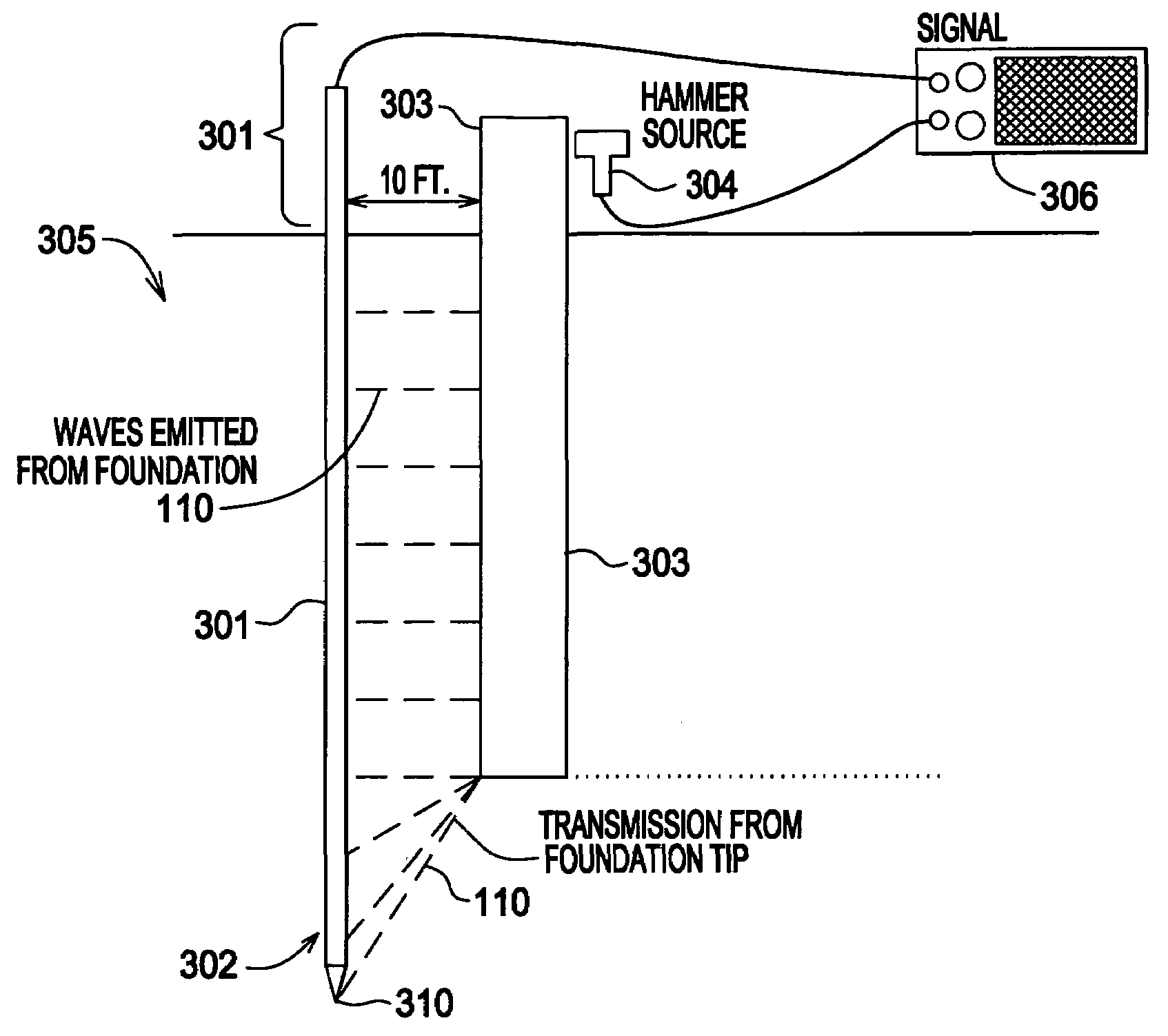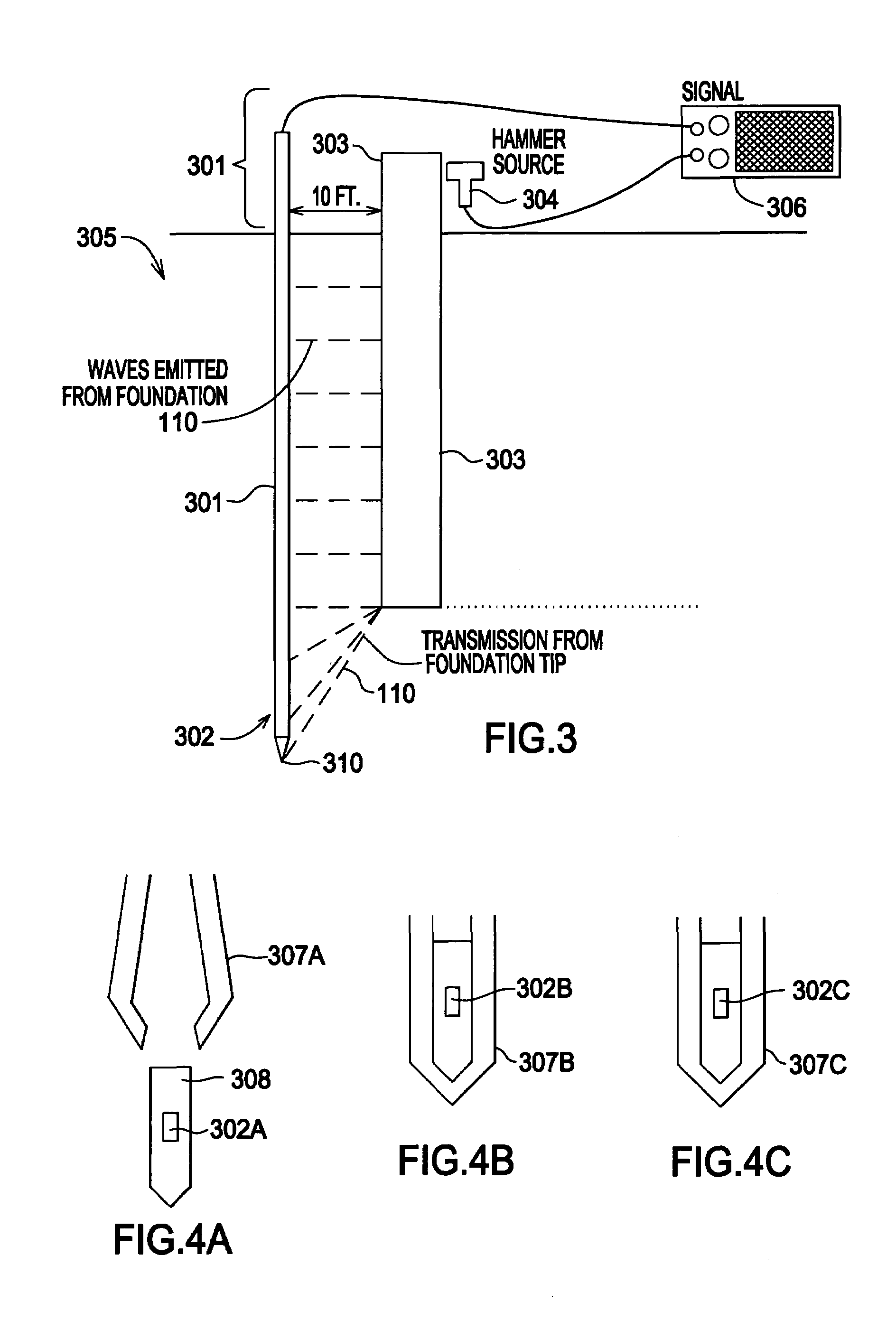Parallel seismic depth testing using a cone penetrometer
a penetrometer and parallel seismic technology, applied in the field of parallel seismic depth testing using a cone penetrometer, can solve the problems of time-consuming and expensive parallel seismic testing
- Summary
- Abstract
- Description
- Claims
- Application Information
AI Technical Summary
Benefits of technology
Problems solved by technology
Method used
Image
Examples
Embodiment Construction
[0020]FIG. 1 (prior art) is a side schematic view of a conventional parallel seismic testing device. Foundation 101 (or some element connected to the top of the foundation, such as a pile cap) is impacted by impactor 102 (a hammer or the like). Impact hammer 102 is typically an instrumented three pound hammer producing 2000–5000 pounds of force. The instruments record (among other things) the impact time (T0) of the impactor, so that the propagation time of waves 110 can be measured. An alternative hammer 102 might comprise a steel sledge hammer, three to eight pounds, with an accelerometer mounted next to the impact location to record the impact time.
[0021]Compressional, shear, or flexural waves 110 travel down through foundation 101 and are transmitted into the surrounding soil 112. Borehole 104 is drilled out and the drill bit removed. Borehole 104 may be cased or braced. Receiver 103 is lowered into borehole 104. Borehole 104 must be cased if receiver 103 is a hydrophone, becaus...
PUM
 Login to View More
Login to View More Abstract
Description
Claims
Application Information
 Login to View More
Login to View More - R&D
- Intellectual Property
- Life Sciences
- Materials
- Tech Scout
- Unparalleled Data Quality
- Higher Quality Content
- 60% Fewer Hallucinations
Browse by: Latest US Patents, China's latest patents, Technical Efficacy Thesaurus, Application Domain, Technology Topic, Popular Technical Reports.
© 2025 PatSnap. All rights reserved.Legal|Privacy policy|Modern Slavery Act Transparency Statement|Sitemap|About US| Contact US: help@patsnap.com



